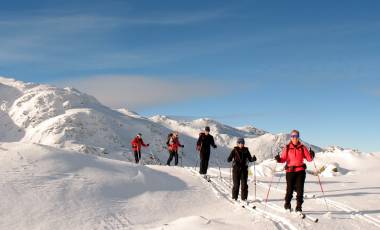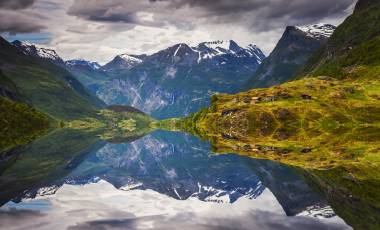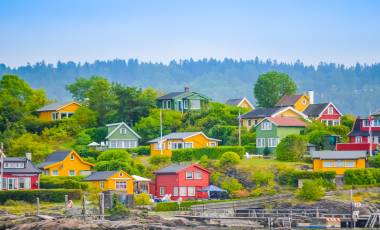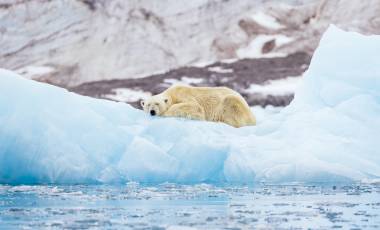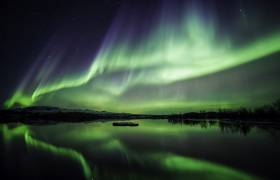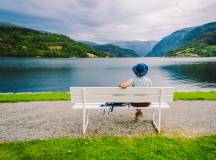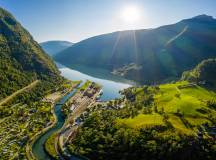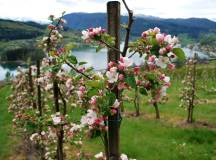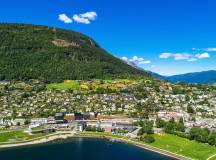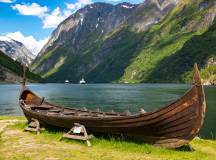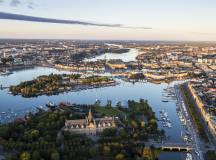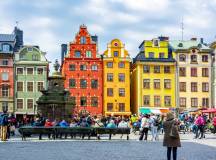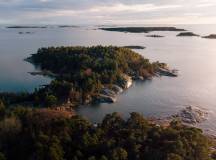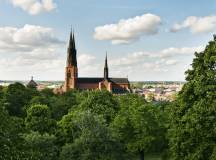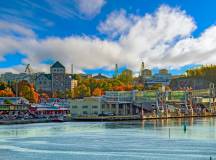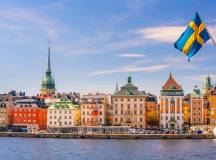Whether you want summertime fjords, snowy skiing spots or Arctic adventures, Norway has it all
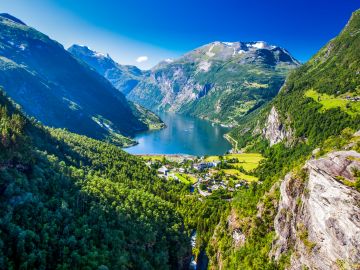
Norway Trips
Norway Tours
Our Top Destinations in Norway
Trips to Norway
Top 5 Highlights of Trips to Norway
Norwegian Fjords: Cutting through dramatic landscapes, the Norwegian Fjords are among the country’s most impressive sights and are considered one of the world’s greatest natural wonders. The sheer magnitude and raw beauty of thundering waterfalls and lush hillsides that fall into the valleys below will take your breath away. The deepest and longest fjord is the Sognefjord and stretches for more than 200km to Jostedalsbreen National Park.
Arctic wildlife: Home to a wonderful array of Arctic animals, Norway is a great location for wildlife tours. Head to the remote archipelago of Spitsbergen to enjoy incredible encounters with polar bears, reindeer and walrus. With a population of approximately 3,000 polar bears, Svalbard is the best place to see these majestic creatures in their natural environment. Beneath the icy waters, there are also around 19 species of marine mammals, including ringed, bearded and harbour seals, whales and dolphins.
Northern Lights: Also known as the aurora Borealis, the Northern Lights are often seen cavorting across the dark skies above Norway. Although this spectacular light show can be somewhat elusive, our trips to Norway take you to some of the best places in the world to see them. Because there is more solar activity the further north you travel, Tromso is the best place to go in search of the lights. Kirkenes, Lofoten and Svalbard are also great for Northern Lights tours.
City tour of Oslo: The vibrant and cosmopolitan capital of Norway, Oslo is a fabulous city that blends history, culture and nature. On Norway tours, visit the neoclassical Royal Palace, see the Baroque architecture of Oslo Cathedral and explore the world’s largest sculpture park, Vigeland Scupture Park, where you’ll find more than 200 bronze, iron and granite sculptures designed by Gustav Vigeland. Learn about the country’s most renowned artist, Edvard Munch, at the Munch Museum where you can see his most famous painting The Scream.
Cross-country skiing: Owing to its snow-covered, winter landscapes, Norway lends itself to cross-country skiing. On Norway trips, visit Kvitavatn with its beautiful frozen lake and embark on a magical journey through forests and snowy wilderness. Venabu is another great destination for skiing as it stands on the edge of Rondane National Park, just to the north of Lillehammer, and is made up of dramatic mountains and beautiful valleys.
Are your trips to Norway guided?
The majority of our trips to Norway are guided groups, which is a fantastic way to explore all the locations on your list with other eager travellers. If you are heading on a skiing adventure trip to Norway, you and your group will receive expert instruction from first class guides, while an experienced local guide will be waiting for those of you opting for an action-packed Norway walking holiday.
How long are your Norway trips?
Our incredible Norway trips start at 5 days and extend up to 9 days. Whether you’re dreaming of seeing the Northern Lights, whale watching, walking the Fjords or skiing along beautiful new routes, we have the perfect Norway trip for you.
It’s time to book your adventure holiday to Norway!
No matter if you’re wanting to go cycling along forest paths or peaceful beaches, cross-country skiing on the shores of frozen lakes or walking through untouched scenery, we have something for every kind of traveller. If you’d like to plan a more bespoke trip, please get in contact with one of our team.
FAQs on Norway Tours
The country is beautiful all year round but when you should book trips to Norway will all depend on what you want to see and experience while you’re there. From June to August, you can experience the Midnight Sun, and the longer daylight hours mean there’s more time for exploring the lush landscapes and fjords. If you want to optimise your chances of seeing the Northern Lights, travel between late September and March. Winter is also a good time for enjoying the snow-covered scenery on cross-country skis. If you’re a wildlife lover, in springtime from March to May, the snow begins to melt, the wildlife comes out of hibernation and the skies and cliffs are filled with birdlife.
Home to some of the most northernly locations on earth, Norway is one of the best places to go in search of the Northern Lights. From late September to the start of April, the Aurora grace the dark skies above the Arctic Circle. Depending on various factors such as light pollution and weather conditions, the best times to see the Northern Lights is from 10pm to 2am. Tromso, the Lofoten Islands and Svalbard are among some of the top places to witness nature’s spectacular light show.
With beautiful natural landscapes, incredible wildlife and stunning architecture, Norway really packs a punch when it comes to adventure holidays. We’ve listed below just a few of our favourite things to do on Norway tours.
Explore the Norwegian Fjords
Northern Lights tour
Sightseeing tour of Oslo
Cross country skiing
Arctic cruise of Spitsbergen
Walk under the Midnight Sun
Ride on a funicular railway
Visit the Kon-Tiki Museum
Explore Vigeland Sculpture Park
Visit the Munch Museum
Ride in a cable car
The UNESCO-listed Geirangerfjord is considered by many as the most beautiful fjord in Norway. Stretching for 60 miles from Alesund to Geiranger, it is enveloped by dramatic mountain peaks and plummeting cliffs where immense waterfalls cascade down the rock face into the water below. The Seven Sisters is particularly spectacular and is made up of seven streams, and Bridal Veil Waterfall is equally as impressive. Dotted along the fjord are pretty villages and towns where you can soak up the rich Norwegian culture.
Surprisingly, winters in Norway may not be as cold as you think. Average temperatures can drop to -6.8 degrees Celsius, but this can vary depending on where you go. In places such as Kvitivatn and Venabu, which are popular areas for cross-country skiing, daytime temperatures can range from 0 – 10 degrees Celsius and might even fall as low as 25 degrees Celsius on some occasions. Around the capital city of Oslo, you can expect from 0 degrees and -5 degrees Celsius. The coastal regions of Norway usually enjoy a milder climate owing to the strong winds of the Gulf Stream.
Like other Scandinavian countries, the traditional food in Norway differs from the rest of mainland Europe. There is much more fish and game, such as reindeer, moose and deer, incorporated into their meals as they were able to be hunted. You’ll also find lamb as a main ingredient in many dishes. Over the last few decades, the culinary scene has changed, with Norwegians embracing food from different parts of the world, with things like pasta, burgers and tacos appearing on menus. However, you’ll still find traditional foods such as meatballs, farikal and lapskaus popular at restaurants and in family homes.
Occurring in Arctic and Antarctic regions throughout the summer months, the Midnight Sun is a natural phenomenon that sees the landscape drenched in 24 hours of sunshine, meaning it never gets dark. The phenomenon occurs when the Earth’s axis tilts towards the sun, and this can last for up to five months in areas such as Svalbard. Although the sun does still become lower in the sky, it never actually falls below the horizon, making it a great time to explore on Norway trips.
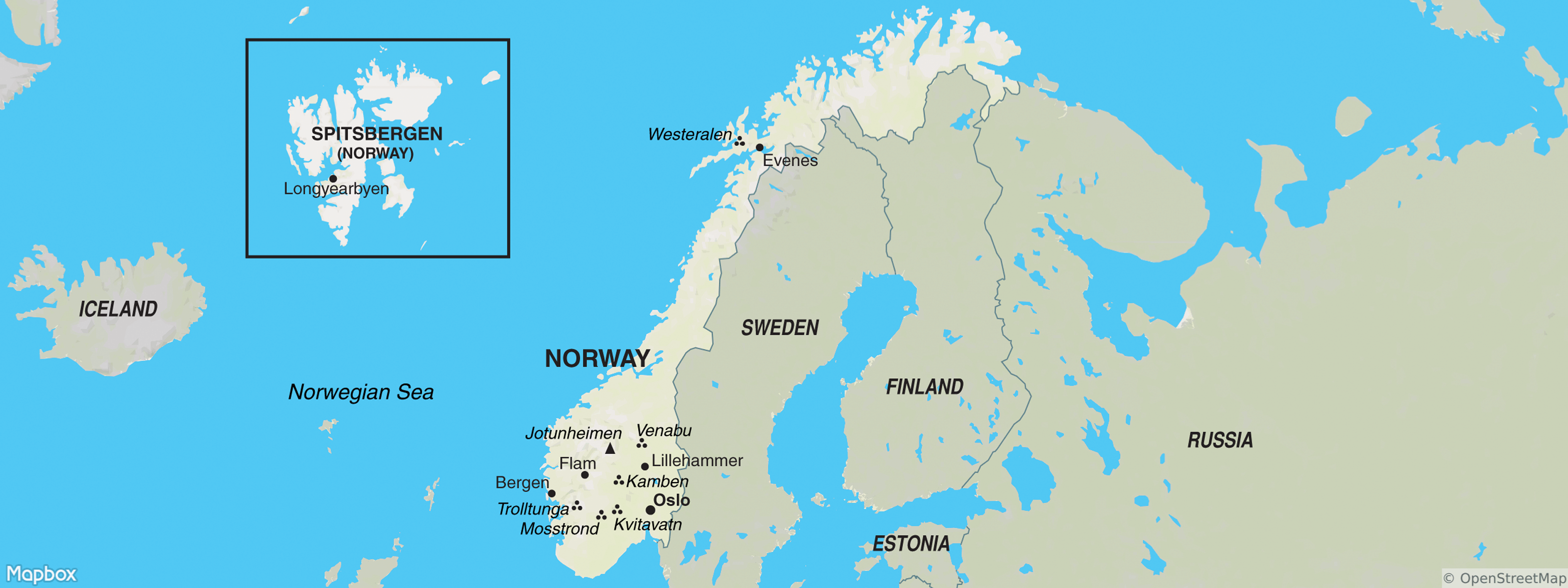
Expert Blog Entries
The Adventure Begins Here
Get regular inspiration straight to your inbox from Exodus’ experts.
